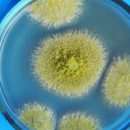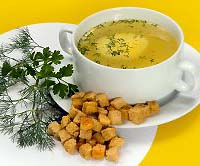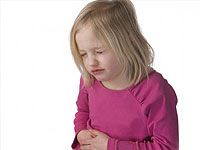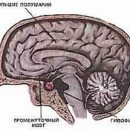How the opistorhosis occurs in pregnant women? How is the treatment of opistorhoz in pregnant women? Answers to these questions you will find in the article.
Content
Opistorhoz and pregnancy
Optiorhoz - a parasitic disease, the causative agent of which is the gelmintion from the opistorchide family - a feline duxtile, or opistorhis. In our country, this disease is distributed in the territories of the River Basins of the Dnieper, Dongs, Volga, Kama, Nemman. The most powerful focus of opistorhoz is located in the Osco Irtysh basin.
The development of opistore occurs with a mandatory change of 3 owners: final, additional and intermediate. Final owner, t. E. the organism in which the parasite reaches puberty, for opistory, is a person and some kinds of animals (cat, dog, fox, sandy, etc.).
Mature opistores are a flat worm of 0.2 to 1.2 cm long and a width to 0.3 cm. Himself his habitat in the body of the host - the bivternity of the liver, gallbladder, pancreatic ducts.
Adult individuals of the parasite isolated eggs that fall along with the deferentrations of the final owner into the external environment. Further development The parasite performs consistently in mollusks (intermediate owner) and carp fish (optional). Fish-parasitic the larva shape of helminth (metacerchanical) invasion for the final owner. Mature metaacercology is oval, less often round cyst, inside which is the larva. The following types of fish can be infected with metalcars: June, Elets (Megdym), Siberian roach (Chebak, Sorogo), Lin, Bream, Pescar, Galjan, Zherech, Usach.
Sick man, pets and some kinds of wild mammals are served by the sources of invasion (infection).
The massive introduction of the eggs of parasites in the reservoirs occurs with gross violations of the rules of municipal sanitation: the device of landfills in the floodplain of rivers or on the ice of water bodies, discharges of sewage water without their preliminary cleaning and t. D.
Permanent facal pollution of water bodies causes high infestation of mollusks and fish with larval forms of helminth. Man infection opisthorchosis is possible when eating fish containing viable Helmint larvae. Living metaacercaria can be in insufficiently roasted, coarse, low-salted and dried fish of carp breeds. For invasion, there is quite a single use of a small dose of unreserved product.
Parasites are attached to their suckers attached to the walls of the liver, pancreas, anguil bubble; At the same time, they damage the epithelium, thereby contributing to the penetration of infection. The large accumulation of parasites and the allergic edema of the walls of bile ducts prevent the outflow of bile, as a result, which the liver increases in size, compacted, becomes painful.
Symptoms of opistorhoz in pregnant women
In the clinical classification of opisthorchosis distinguish with sharp (early) and chronic phases. By gravity in the acute phase of opisthorchosis, it is possible to highlight a heavy, medium, lightweight and erased form of illness.
The disease usually begins 2-3 weeks after eating in contaminated fish. In the first days of the disease, the main symptoms are general weakness, headache, fever, accompanied by chills and the pouring, increase in the evenings of the body temperature to 38-40°WITH.
 In the 1st week of illness, pain in the epigastric region or throughout the stomach, nausea, often vomiting and chair disorders.
In the 1st week of illness, pain in the epigastric region or throughout the stomach, nausea, often vomiting and chair disorders.
Approximately the third of the patients in the acute period, catarrhal phenomena are marked (Inflammation of the mucous membrane). In the future, the pain in the chest, cough, shortness of breath. Often revealed an increase in lymph nodes, spleen. The lungs are listening to weakening or rigid breathing, dry and wet wheems, myocarditis is possible in severe cases.
More constant for this period of the disease Symptoms of liver damage: pain in the right hypochondrium, increase in the size of the liver, the jaggliness of the scool, soft sky or skin. The liver function is broken from the first week of illness.
One of the permanent symptoms of the acute phase of opisthorchosis is high eosinophilia, reaching in the midst of the disease 20-90%. At the same time, the total number of leukocytes increases, elaborates.
In pregnant women, heavy forms of toxicosis of both the first and second half of pregnancy, the phenomena of threatening miscarriage and premature births, the intrauterine asphyxia and the fetal death can be developed in the acute phase of opisthorchosis.
However, in the clinical picture of acute opisthorchosis there are no characteristic signs for which it would be possible to immediately raise the final diagnosis. The disease can proceed under the mask of influenza, angina, bronchitis, gastritis, viral hepatitis (Bottina disease), mechanical, hemolytic jaundice, infectious mononucleosis and other diseases with which acute opistorhosis should be differentiated.
In the formulation of the final diagnosis, the identification of opistorhak eggs in duodenal content and feces, which can be detected after 4-5 weeks from the moment of infection.
Treatment of opistorhoz in pregnant women
Pregnant women who are in the acute phase of opisthorchoz are subject to mandatory hospitalization in the department of the maternity hospital. The main attention in the treatment should be directed to the relief of allergic symptoms and the restoration of the disturbed functions of the liver. Patients prescribe bedding (in a horizontal position, the blood supply to the liver is improved) and a protein-carbohydrate diet. Milk, meat products, vegetables, fruits, honey. Daily amount of liquid to 2-3 l, daily calm 3000 kcal. Recommended to 400 g of fresh cottage cheese per day.
To relieve allergic symptoms as desensitizing therapy, diphrol, pepolfen, acetylsalicylic acid, calcium chloride are prescribed. In order to disinfect and enhance the regeneration of hepatic cells, the introduction of a solution of glucose (intravenously or oral), vitamins C, E and group in (inone, IN2, IN6, IN12), lipotropic drugs (methionine, lipocaine and t. D.). In severe cases, blood plasma transfusion, albumin, are prescribed corticosteroids. In the early phase of the disease, antibiotics are contraindicated due to a sharply pronounced allergic symptom complex.
With pain in the liver area, antispasmodics are used (papaverine, but-shpa and t. D.); From the choleretic can be assigned Allhol, Holys, Hologol and T. D.
However, due to the high vulnerability of the liver in the acute phase of opisthorchosis, preparations with a choleretic and anti-inflammatory effect are pregnant, but not negative action on the fruit. These are primarily attacks and brave of medicinal herbs (immortelle, mint, St. John's wort, Speert, Nogot, Chamomile, Rephetok, Corn Forers, and PR.).
For the prevention of hypockey of the fetus, sigitin, galoshbin, triad in Nikolaev should be prescribed.
In kinds of invasive women, it is necessary to prevent the prevention of hypoxia of the fetus, weakness of generic activity and hypotonic bleeding.
Antiparasitic treatment of chloxil in the acute phase of opisthorchosis during pregnancy and lactation due to the toxicity of the drug is contraindicated. It should be proceeding at the end of the lactation period, subsidiary of an acute period of illness, but not earlier than 1.5 months from the moment of infection.
In the system of prophylactic measures aimed at individual units of the epidemic chain at opistorhoz, the main current is currently neutralizing. To train the population, rational methods of fish processing should be used all available forms of health education (lectures, conversations, health lessons in school, leaflets, film demonstrations).









